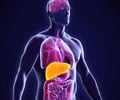32% of MASLD patients report sleep disturbances due to stress, vs. just 6% of healthy individuals.

Significant nocturnal wakefulness after sleep onset in metabolic dysfunction-associated steatotic liver disease
Go to source).
What is MASLD
MASLD (formerly known as non-alcoholic fatty liver disease) is the most common liver disorder: it affects 30 percent of adults and between 7 percent and 14 percent of children and adolescents. This prevalence is predicted to rise to more than 55 percent of adults by 2040.‘Patients with metabolic dysfunction-associated steatotic liver disease #sleep more during the day? What's the link between #liverdisease and sleep? #MASLD’





While previous studies have implicated disturbances in the circadian clock and the sleep cycle in the development of MASLD, the new study by researchers from the University of Basel in Switzerland showed for the first time that the sleep-wake rhythm in patients with MASLD does indeed differ from that in healthy individuals. In the paper, published in the journal Frontiers in Network Physiology, the team showed that patients with MASLD woke 55 percent more often at night, and lay 113 percent longer awake after having first fallen asleep, compared to healthy volunteers.
MASLD Linked to Severe Sleep Disruptions
“People with MASLD have significant fragmentation of their nightly sleep due to frequent awakenings and increased wakefulness,” said Dr. Sofia Schaeffer, a postdoctoral researcher at the University of Basel. The team recruited 46 adult women and men diagnosed with either MASLD, or MASH, or MASH with cirrhosis; compared them with eight patients who had non-MASH-related liver cirrhosis. These were also compared with 16 age-matched healthy volunteers.Each study participant was equipped with an actigraph -- to track gross motor activity with a sensor worn on the wrist -- to be worn at all times, which tracked light, physical activity, and body temperature. The results showed that sleep patterns and quality as measured by the actigraph were similarly impaired in patients with MASH, MASH with cirrhosis and non-MASH-related cirrhosis.
The findings showed that "sleep fragmentation plays a role in the pathogenesis of human MASLD,” said Schaeffer.
Advertisement
Reference:
- Significant nocturnal wakefulness after sleep onset in metabolic dysfunction–associated steatotic liver disease - (https://www.frontiersin.org/journals/network-physiology/articles/10.3389/fnetp.2024.1458665/full)















